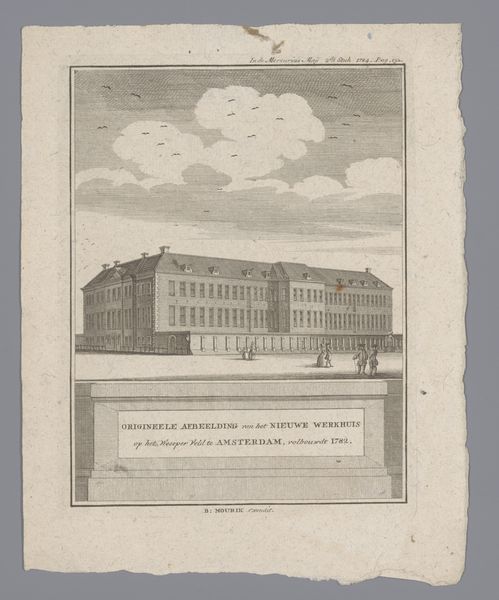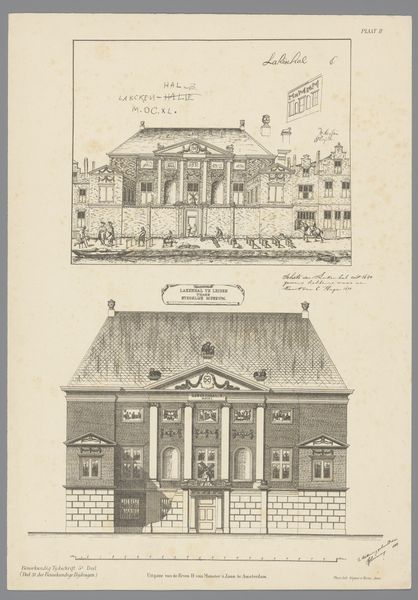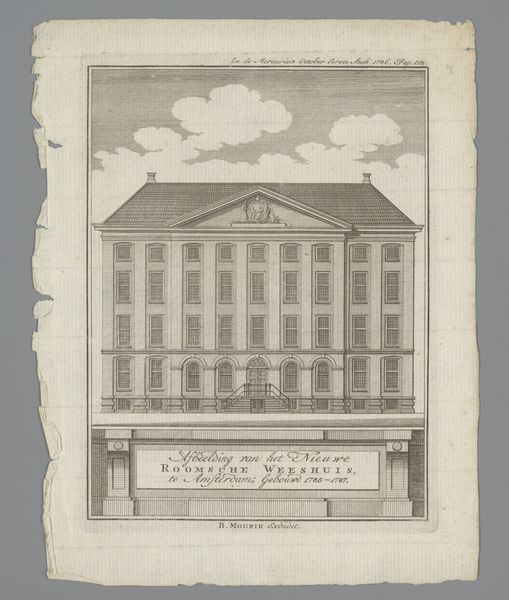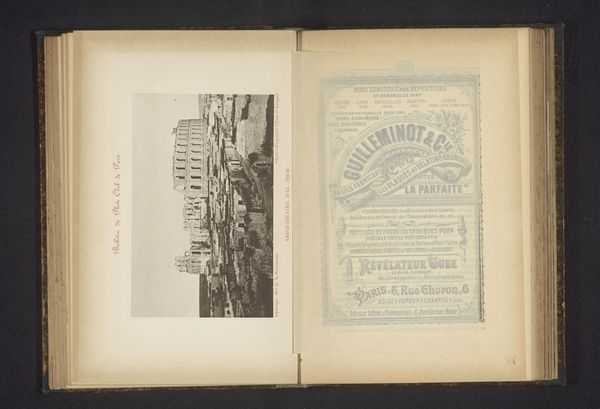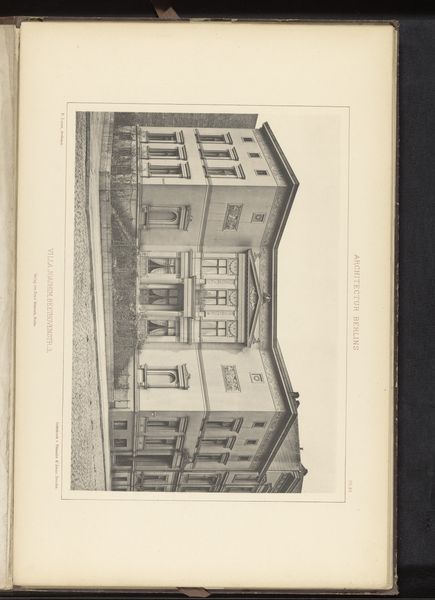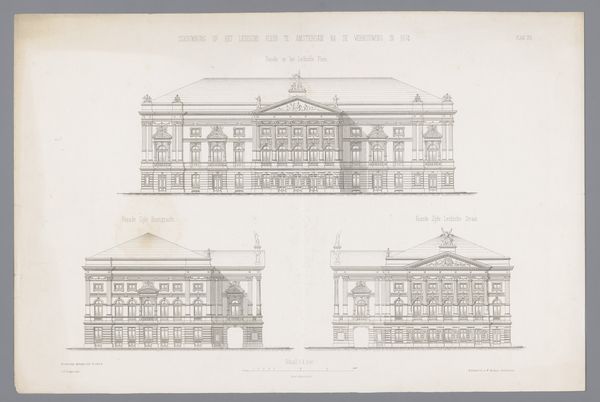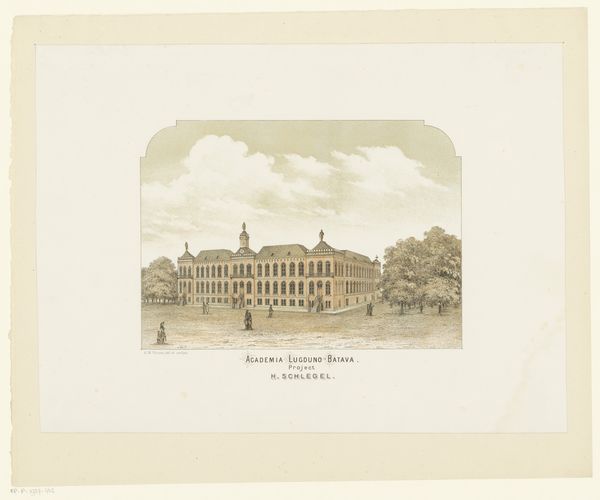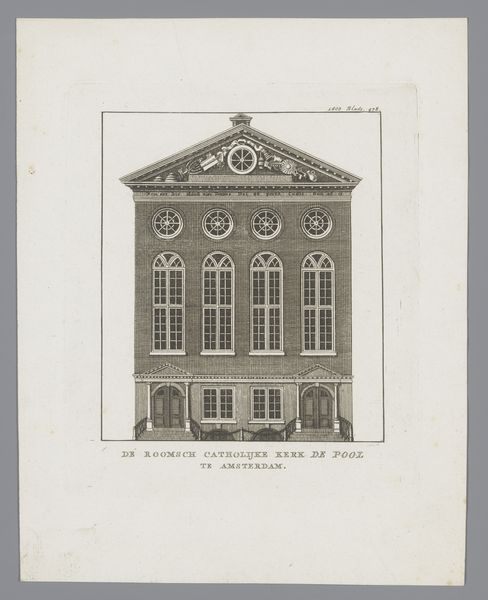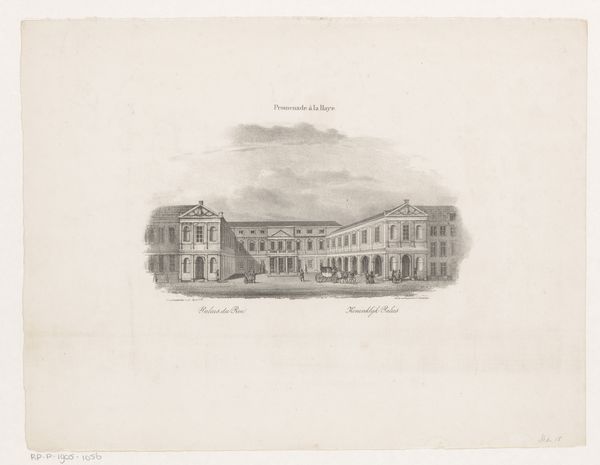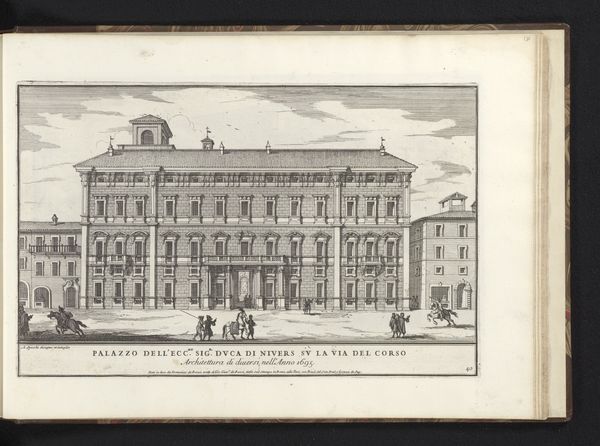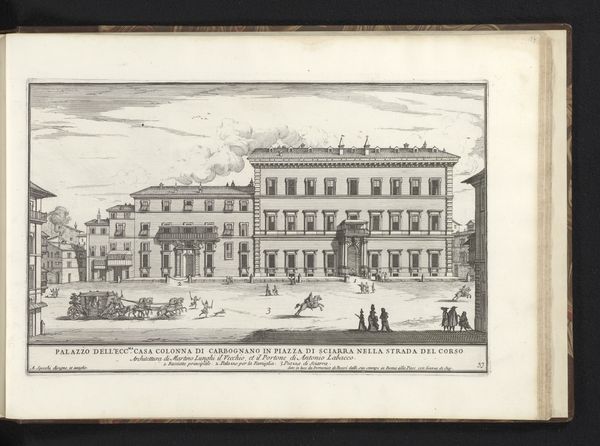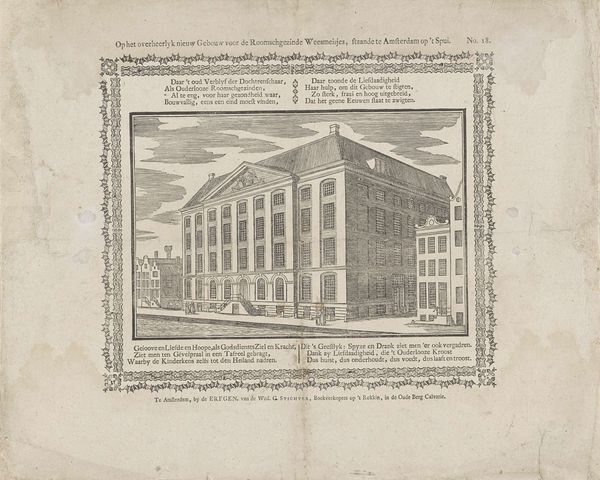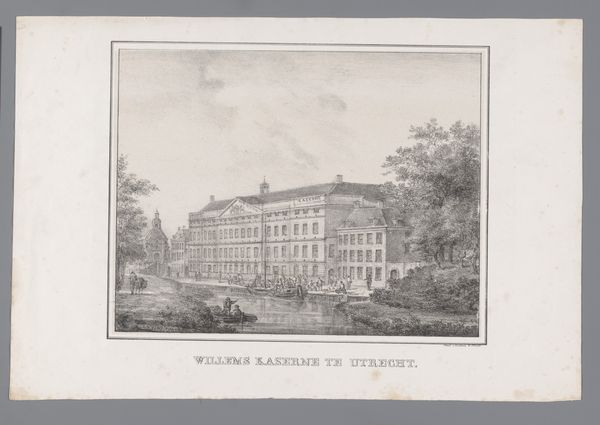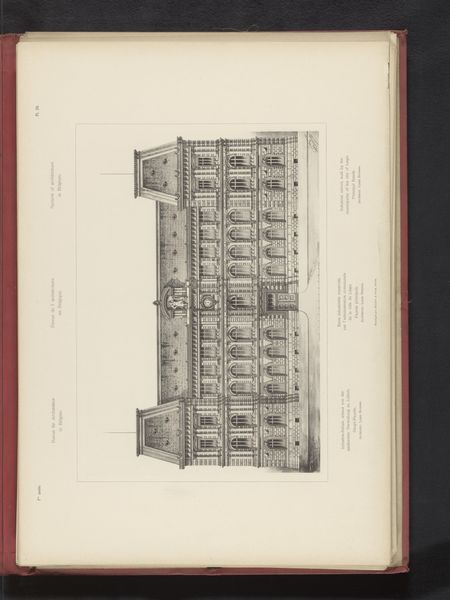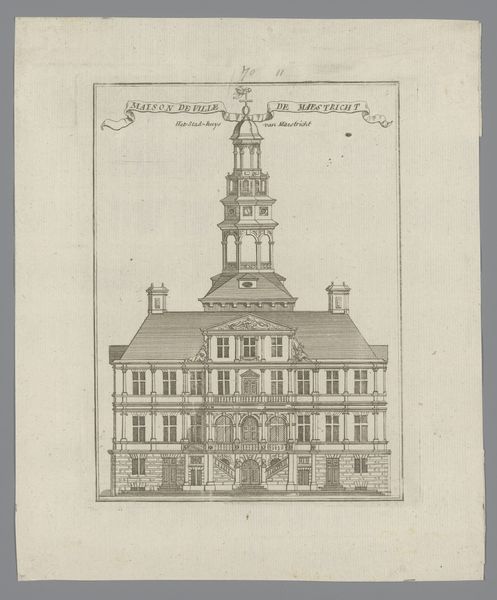
Gebouw van de Vereeniging ter Verbreiding der Waarheid, en zeven interieurs van hetzelfde gebouw c. 1864
0:00
0:00
graphic-art, print, engraving, architecture
#
graphic-art
#
medieval
#
narrative-art
# print
#
cityscape
#
genre-painting
#
academic-art
#
engraving
#
architecture
Dimensions: height 461 mm, width 382 mm
Copyright: Rijks Museum: Open Domain
Curator: This engraving from circa 1864 presents us with "Gebouw van de Vereeniging ter Verbreiding der Waarheid, en zeven interieurs van hetzelfde gebouw," which translates to "Building of the Association for the Propagation of Truth, and seven interiors of the same building." Editor: It immediately strikes me as rather cold and formal. The stark black and white, the rigid lines of the architecture, it all feels very...institutional. Curator: The artist, whose name is currently unknown to us, has employed meticulous detail to capture not only the building’s facade but also its internal spaces. Notice how each interior scene is carefully framed, almost like a stage set. Semiotically, the architectural elements suggest stability and order. Editor: And truth, supposedly. But who gets to define that truth, and who is excluded from this ordered space? Looking at the grand hall filled with rows and rows of people, I wonder about access and representation. This building wasn't just a neutral space; it was a site of power. Who were these people propagating “truth”? What perspectives did they represent, and whose voices were they silencing in the process? Curator: A valid question. Focusing on the purely visual though, the composition's hierarchical arrangement is noteworthy. The building exterior dominates the central space, with smaller interior views surrounding it like satellites. Editor: Precisely. The exterior’s imposing size reflects the importance of the institution itself. I see a subtle assertion of authority inherent in this arrangement and wonder how much of this visual presentation aligns with a historical suppression of other conflicting perspectives at the time. Was it truly about “truth” or about reinforcing specific socio-political doctrines? Curator: We could analyze the patterns created by the window placements, or the variations in light and shadow across the facades. It exemplifies a representational, academic style typical of the period, aiming for realistic depiction. Editor: Realism serving ideology, wouldn't you say? The quest for truth is never simple, or neutral. Thank you. Curator: Indeed, there is always complexity. I think our close attention reveals multiple viewpoints on a singular, visually accessible historical artwork.
Comments
No comments
Be the first to comment and join the conversation on the ultimate creative platform.
